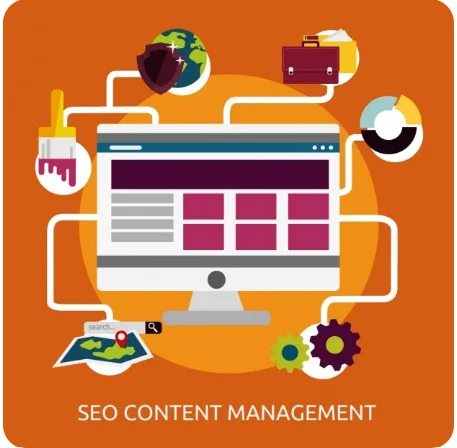
The user experience, or UX, is the backbone of any website. No matter how visually attractive a site might appear, visitors will likely leave in frustration within seconds if navigation is clunky or information is hard to find. The significance of UX has only intensified as digital spaces become more competitive and user patience shrinks. According to recent user experience trends, the best websites now combine streamlined paths with a pleasing visual flow, giving visitors exactly what they seek—quickly and painlessly.
User Experience: The Foundation of a Great Site
Suppose you’re setting out to build or revamp your site. In that case, guides covering web design essentials for beginners can serve as a valuable foundation for understanding how usability, layout, and precise messaging drive results. It’s not just about pleasing the eye it’s about making every click work. Consider this real-world scenario: a small consulting firm launches a gorgeous website. The color palette is inviting, and every photo seems perfectly chosen.
However, their contact form is buried several clicks deep, and their services page is confusing. Despite loads of traffic, form submissions and calls fail to appear. This situation happens daily—clean aesthetics don’t compensate for poor user experience. To gain traction, always map user journeys first and prioritize intuitive structure, fast access to critical information, and mobile responsiveness from the outset.
Key Takeaways
- Every standout website starts with a focus on user experience and delivers a seamless, engaging journey across every device.
- Mobile responsiveness, lightning-fast performance, and intuitive navigation are now basic expectations from users everywhere.
- Consistency in branding, clarity in messaging, and compelling calls to action build trust and encourage visitors to act.
- Optimizing search engines, ensuring strong security, and making sites accessible to everyone help websites reach broader audiences and deepen credibility.
Mobile Optimization
It’s no secret that mobile devices have been the primary gateway to the internet for billions of people. Current statistics reveal that mobile devices account for more than 58% of global website traffic, making responsive design a must for anyone hoping to compete. This means your website has to adjust flawlessly for small and large screens alike—resizing text, shuffling layouts, and ensuring that every image loads cleanly on various devices. To improve mobile performance, designers should aim for tap-friendly buttons, vertically stacked content, and menus that are easy to navigate with one hand.
Industry reports have found that websites lacking mobile optimization experience bounce rates nearly double those of responsive sites. With so much competition only a search away, even minor pain points—like illegible font sizes or forms malfunctioning on smartphones—can chase away potential leads. Making your site mobile-friendly isn’t just about aesthetics; it’s about providing universal access, regardless of device.
Fast Loading Times
Website loading speed makes or breaks a visitor’s experience. In the age of instant gratification, users expect nearly instantaneous access to content. Data consistently shows that 40% of people will abandon a site that takes over three seconds to load, and every additional second in loading time can reduce conversions by up to 20%. Ensuring fast speeds is a crucial element of modern web design.
- Compress images and graphics before uploading to slash unnecessary data usage.
- Please limit the number of custom fonts and heavy animations, focusing on performance where it truly matters.
- Utilize browser caching, so repeat visitors aren’t stuck reloading already-viewed resources.
- Minify CSS, JavaScript, and HTML files to remove digital clutter.
Leveraging insights from Google PageSpeed can help you assess where your site is slow and how to make meaningful improvements. Minor tweaks in performance aren’t just technical upgrades—they have significant implications for SEO, user satisfaction, and retention.
Visual Hierarchy and Brand Consistency
Clear visual hierarchy allows visitors to focus on meaningful content instinctively and calls to action without confusion. It’s a fundamental tool for guiding user behavior through color, contrast, font size, and space. Strong headings, well-defined buttons, and eye-catching graphics help lead visitors down the right path from information to conversion.
Consistency in branding such as recurring color palettes, logos, and typography choices reinforces recognition and trust, even if a user only glances at your site briefly. Think about iconic platforms identified instantly by a single color or headline style. Keeping illustrations, imagery, and spacing similar from page to page helps users feel grounded and confident in where they are, boosting brand recall and user comfort.
Compelling and Clear Content
The best websites provide answers quickly and without jargon. Break up big ideas with concise headings, short sentences, and bullet points wherever possible. Visual content—like crisp images or product videos—draws the eye, increases understanding, and keeps visitors engaged. According to recent studies by HubSpot, users spend up to 88% more time on pages with strong visual elements and are likelier to interact with the content.
Always position your main value statement near the top of the page so new visitors can recognize what you offer in seconds. Address everyday user needs, answer pressing questions, and use everyday language to relate the message. Clear, compelling content is your strongest digital salesperson, inspiring confidence and guiding the next step forward.
Clear and Simple Navigation
Easy navigation is vital for reducing frustration and guiding visitors toward their goals. Users expect to reach any section of your website within just a few clicks, and they’ll abandon a complex structure for a competitor’s site if they can’t find what they need.
- Limit primary menu items to no more than seven to avoid overwhelming users.
- Use consistent placements for global navigation, such as menu buttons at the top or side of every page.
- A feature easily accessible “Contact Us” or “Help” options, especially for e-commerce and service-based businesses.
Larger sites benefit from breadcrumbs, sticky headers, or even search bars. Streamlined navigation is a hallmark of user-centric design. It allows people to answer questions on their terms, increasing satisfaction and conversions.
Strong Calls to Action (CTAs)
Every website should guide visitors toward meaningful actions, regardless of industry or goal. Whether signing up for a newsletter, purchasing, or simply requesting more information, clear and persuasive CTAs are the difference between passive browsing and active engagement. Use direct, action-oriented language that tells people exactly what they’ll get—buttons like “Book a Demo,” “Download the Guide,” or “Start My Free Trial” are consistently more effective than generic prompts. Pay attention to placement and contrast—situate your CTAs where users naturally look and make them stand out through bold color or size. The best CTAs create a sense of urgency, communicating why a user should act right now, not a moment later.
SEO Best Practices
Having an attractive website is only half the battle; it must also be easy to discover. Implementing SEO best practices ensures that your content is ranked favorably in search engines, dramatically increasing your potential audience. Use descriptive metadata naturally, integrate primary keywords into your text, and don’t forget about alt descriptions on images for accessibility and SEO gains.
Organize long content with structured headings and refresh pages regularly to stay relevant. Incorporate internal links that make jumping between related resources on your site easy, giving users (and search engines) clear signals about content depth and site structure.
Trust Signals and Security Features
Building trust online is an ongoing process. For e-commerce and business websites, obvious security indicators, like SSL certificates and recognizable checkout badges, reassure buyers. Showcase customer reviews, awards, and verified certifications. Add clear privacy and cookie policies, and make company contacts available to demonstrate transparency.
HTTPS protocols are mandatory for all modern sites. They protect sensitive data and elevate credibility in visitors’ and search engines’ eyes. Trust-building details reduce hesitation and play a significant role in turning interest into action.
Accessibility for All Users
Making your website accessible is both a technical requirement and an act of digital inclusion. This means designing for users with visual, hearing, cognitive, or mobility impairments—ensuring everyone can find and use your content equally. Add descriptive alt text to every image, check color contrast ratios, and use logical heading levels for assistive technologies like screen readers; these are all foundational steps toward inclusivity.
Following WCAG accessibility guidelines will help your site reach more people and futureproof your digital presence against changing standards and regulations. The most accessible sites show users they matter, creating a reputation for thoughtfulness and care that sets your brand apart.

Maximizing Guest Satisfaction Through Professional Vacation Rental Cleaning

A Complete Guide to Dumpster Rental: Efficient Waste Management for Projects of Every Size

Comprehensive Strategies and Best Practices for Fire Mitigation to Protect Lives, Property, and the Environment in Modern Residential and Commercial Settings

Onsite Tire Change in Ottawa : Safe Fast & Professional Tire Services

Accelerating drug discovery through the DEL-ML-CS approach

What Are The Best Google Ads Agencies In Dubai

6 Mistakes to Avoid in WSQ Digital Marketing and AI Training

How to Improve Marketing ROI Through Better Insights and Automation








